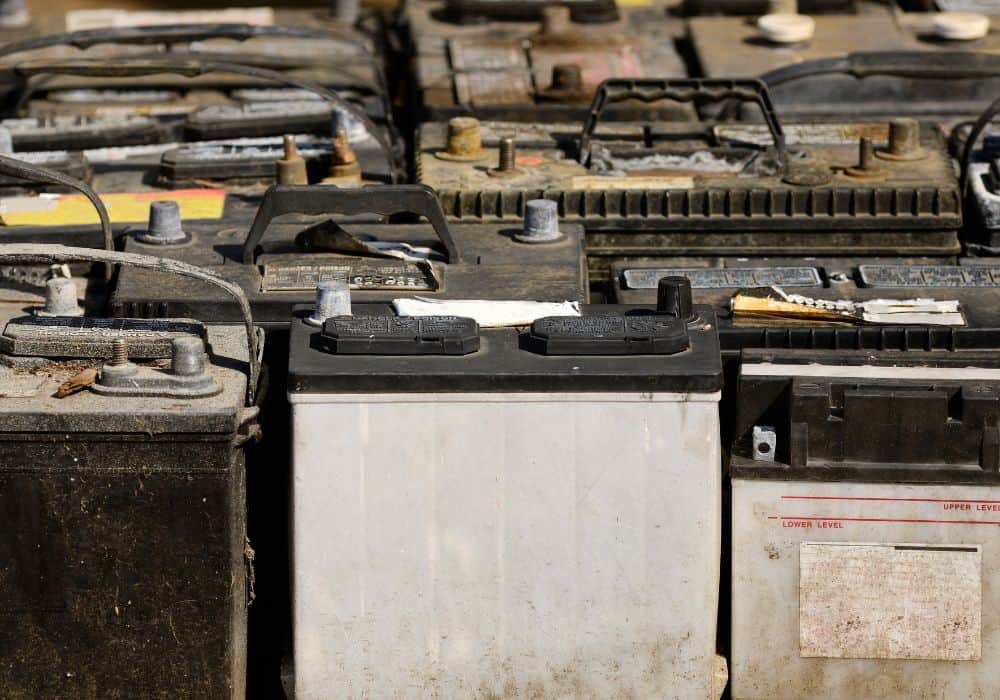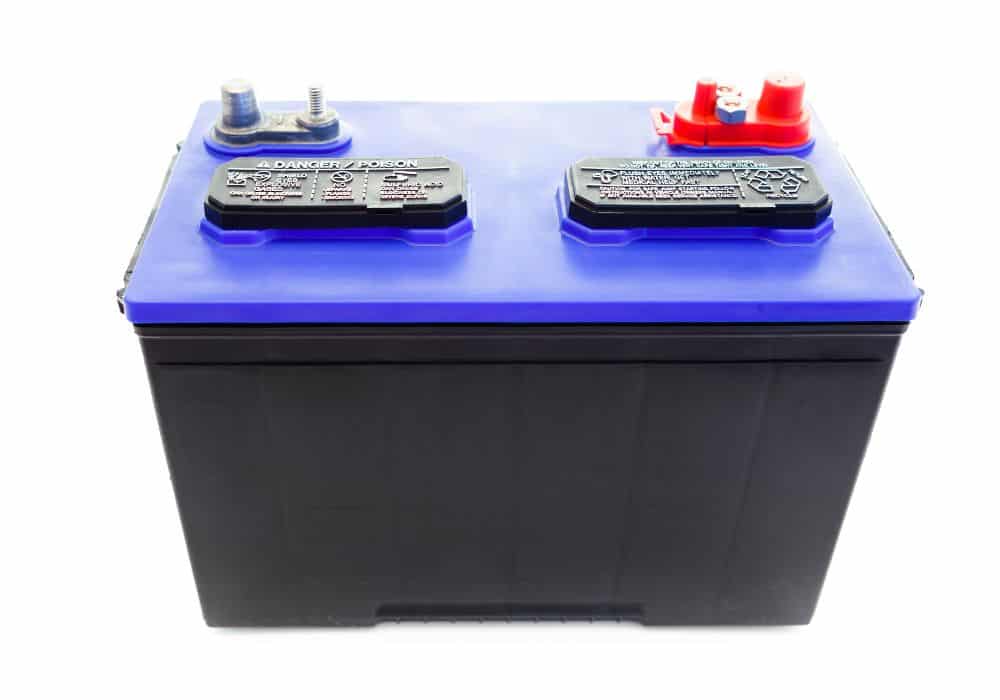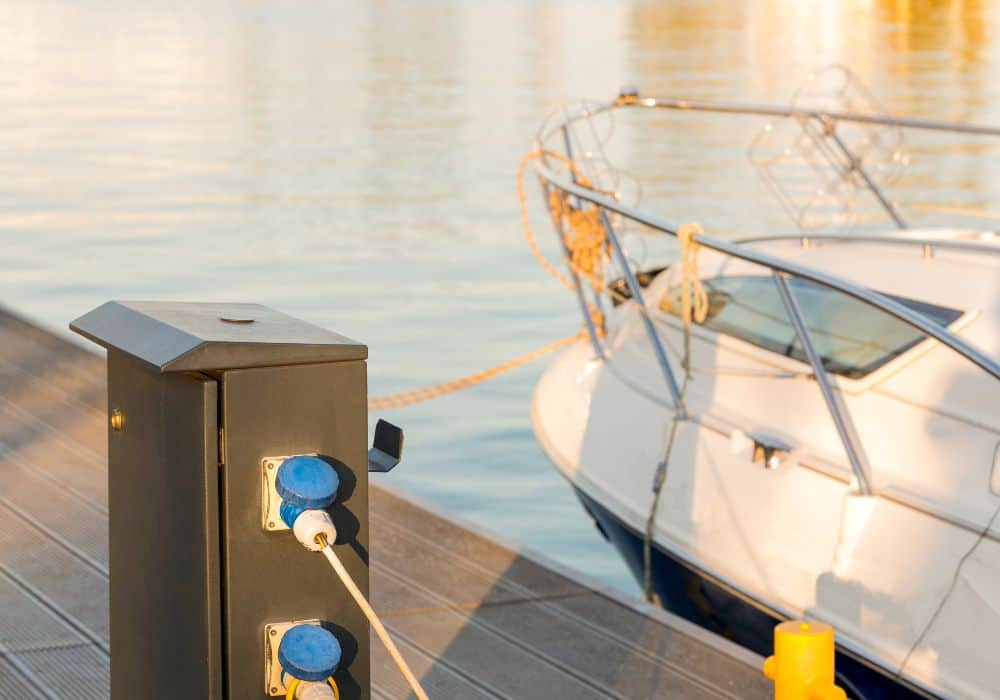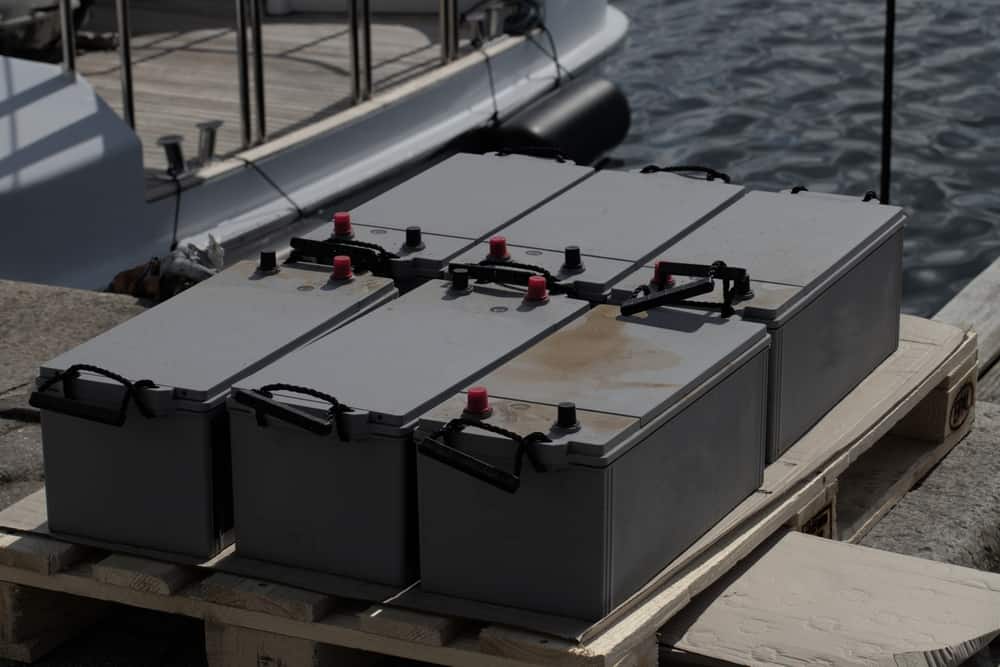There are different abbreviations used to describe the types of batteries and their properties. One of them is MCA used on marine batteries and you might have been unsure of what it means.
Why is it important to know what the letters MCA mean? Understanding the key information about the batteries you are using can help improve their performance and battery life. In this article, we will explain everything you need to know about MCA on batteries.
Table of Contents
What Do The Letters MCA Stand For?

The letters MCA on a battery stand for Marine Cranking Amps. The Marine Cranking Ampere rating is a system used to calculate the output of a battery at 32 degrees Fahrenheit in a short time before the battery voltage drops. The MCA rating expresses how many amps a battery can deliver while sustaining a 1.2 volts minimum voltage.
Why is The MCA Important on a Marine Battery?
Cracking batteries are starting batteries and they need to generate high amperage bursts to start the electrical system and the engine of a boat. The battery is designed to deliver the electrical thrust needed to start the motors.
When choosing a starting battery for a boat, it is important to know the cranking requirements of the motor. You should choose a battery that has more power than is required by your engine.
Checking The Number of Cranking Amps You Need
If you are not sure of the number of amperes you need, you can check this with an amp clamp. To carry out the test, you need to attach the clamp on one of the cables on your starter motor, usually the thickest red one.
Ask someone to crank the engine while you check the amperage shown on the meter. When you know the maximum ampere draw of your starter motor, you will have a benchmark to work from.
Is It Possible to Preserve an MCA Battery?
Proper battery maintenance means you will get the best out of your battery and it will last as long as possible. You should avoid extreme temperatures. Both very cold and hot temperatures can shorten the battery’s life.
Whenever possible, storage batteries should be kept in a cool and dry place, and you should use the correct battery charger when recharging. You should never let your battery completely discharge. When a battery is charged on a regular basis, it will help it last longer.
You should keep your battery charged, even when you are not using it. You should always follow the guidelines from the manufacturer. All battery types are unique so adhering to the instructions will keep your battery working at its best.
Keep your batteries clean. If you notice corrosion, you can remove it with a paste made of baking soda and water. If a battery has any defects, you should discontinue use and speak to the manufacturer in case they are covered under warranty.

Is it Better to Have a Lower or Higher MCA?
Because the MCA rating refers to the starting power of the battery, a higher MCA means more power. If your boat has a very powerful engine or you live in an area where the weather is often cold, you will need a battery with a high MCA.
As well as the MCA rating, there are other factors to consider when you are choosing a battery. These include the reserve capacity the battery has and the length of time it will work between charges.
What You Need to Think About Before You Buy a Battery?
What is the purpose of the battery you are buying? Will you need it to just start the engine, power devices on board a boat, or both? Depending on your answers, you may need a deep-cycle battery with an MCA rating.
You also need to think about the size of the battery. Marine batteries come in various sizes, so choose one that suits your boat. The final factor to consider is the price. More expensive batteries generally offer you better quality and more reliability, so it may be worth spending as much as your budget allows.
What Types of Batteries Are Used in Marine Settings?
Starter batteries, such as the ones with MCA ratings, are just one type of battery used on boats. As the name suggests, their purpose is to start the engine, after which the power production switches to the alternator. They should not be used to power appliances or for trolling motors.
Deep cycle batteries discharge slowly and can go through hundreds of charging cycles. They can be used to troll an electric motor and power accessories on board. The last type of batteries for marine use are dual-purpose batteries that combine the properties of the other two types. This video explains more about marine batteries.
What is The Difference Between MCA-Rated Starter Batteries and Deep-Cycle Batteries?
Both types of batteries are lead-acid batteries but they are used and made differently. While a starter battery’s purpose is to provide a burst of amperes, deep-cycle batteries are not suited to start an engine.
Deep-Cycle Batteries have a high rate discharge capability, which means they can be regularly deeply discharged without damaging the battery. MCA starter batteries are not designed for deep discharging.
Starter batteries like those with an MCA rating, have many thin positive and negative plates. They provide a large surface for electrolytes to react, which provides power for a very short duration. There are fewer plates on deep-cycle batteries and they are thicker. This means that deep-cycle batteries can handle a larger discharge load.
Because the surface area for electrolytes to react with is smaller, it creates a slower release of electrical current and the batteries can be used for a longer period of time. Many batteries used in a marine setting are hybrids of deep-cycle and starter batteries.
Is There a Difference Between MCA and CCA Batteries?
The abbreviation CCA stands for Cold Cranking Amps. The only difference is the temperature the ratings refer to. While MCA measures the battery’s performance in moderately cold temperatures, CCA measures its performance in much colder temperatures: zero degrees Fahrenheit.
If you use a lead-acid battery in cold climates, it is necessary to have a high CCA-rated battery. The higher the Cold cranking ampere rating is, the more amps the battery can generate. More amps mean the battery is more likely to start your engine in colder temperatures.
You can compare the MCA and CCA ratings of two batteries if you multiply the CCA by 1.3. This will give the equivalent MCA rating because MCA is a third higher than CCA. If you know the MCA and want to convert it to CCA, multiply the MCA rating by 0.7.
Is There a Difference Between AGM Batteries and MCA Rated Starting Batteries?
The chemistry that produces the power in AGM batteries and starter batteries with an MCA rating is the same. They both have numerous plates and a mix of sulfuric acid and water. A chemical reaction in both battery types produces oxygen and hydrogen gasses.
The key difference is that AGM batteries have an absorbed glass mat. There are glass mat separators between each AGM cell that help make the battery leak-proof and to prevent free acid and acid spillage.
They do not require any maintenance, unlike lead-acid batteries. AGM batteries are often more resistant to shocks and vibrations than lead-acid batteries.
Other Useful Information For Boaters

As well as knowing the difference between different types of batteries you may use on a boat and the difference between MCA and CCA ratings, it is useful to understand other terminology used to describe batteries.
For example, if a battery is described as having 500 MCA, 80 amp hours (Ah), and a 140-minute reserve capacity, we can use the information to work out the number of minutes it can deliver 25 amps before the current drops. With most batteries, you can work out an approximate Ah capacity by halving the reserve capacity.
As well as knowing the MCA and CCA rating of your battery, you need to know its Ah rating or its capacity rating. This will help you understand how well the battery will service the DC load and appliances on board your boat.
For example, a fully charged battery with 2 volts and 100 Ah can, in theory, deliver five amps for twenty hours before it reaches a minimum voltage level. However, a battery’s capacity will decrease as the discharge rate increases.
Other Abbreviations Used on Batteries
When you are reading a battery’s classification, you may also come across other common abbreviations to describe the battery. Here are brief explanations of those abbreviations.
CA – cranking amps measured at 32 degrees Fahrenheit
HCA – hot cranking amps, not often used, but measure cranking amps at 80 degrees Fahrenheit
RC – the reserve capacity rating. The reserve capacity of a battery shows how long the battery can discharge 25 amps before the voltage drops below 10.5.
BCI – Battery Council International, their group numbers define the size of the battery case.
Conclusion
Knowing the MCA rating of a battery is important because it tells you how much power it can deliver when you are starting your boat. The many thinner plates in the strain battery make them suitable for delivering rapid short bursts of power the engine needs to start.
We hope to have covered all your questions about MCA on batteries. However, should you have further questions, you can write them in the comments section.
